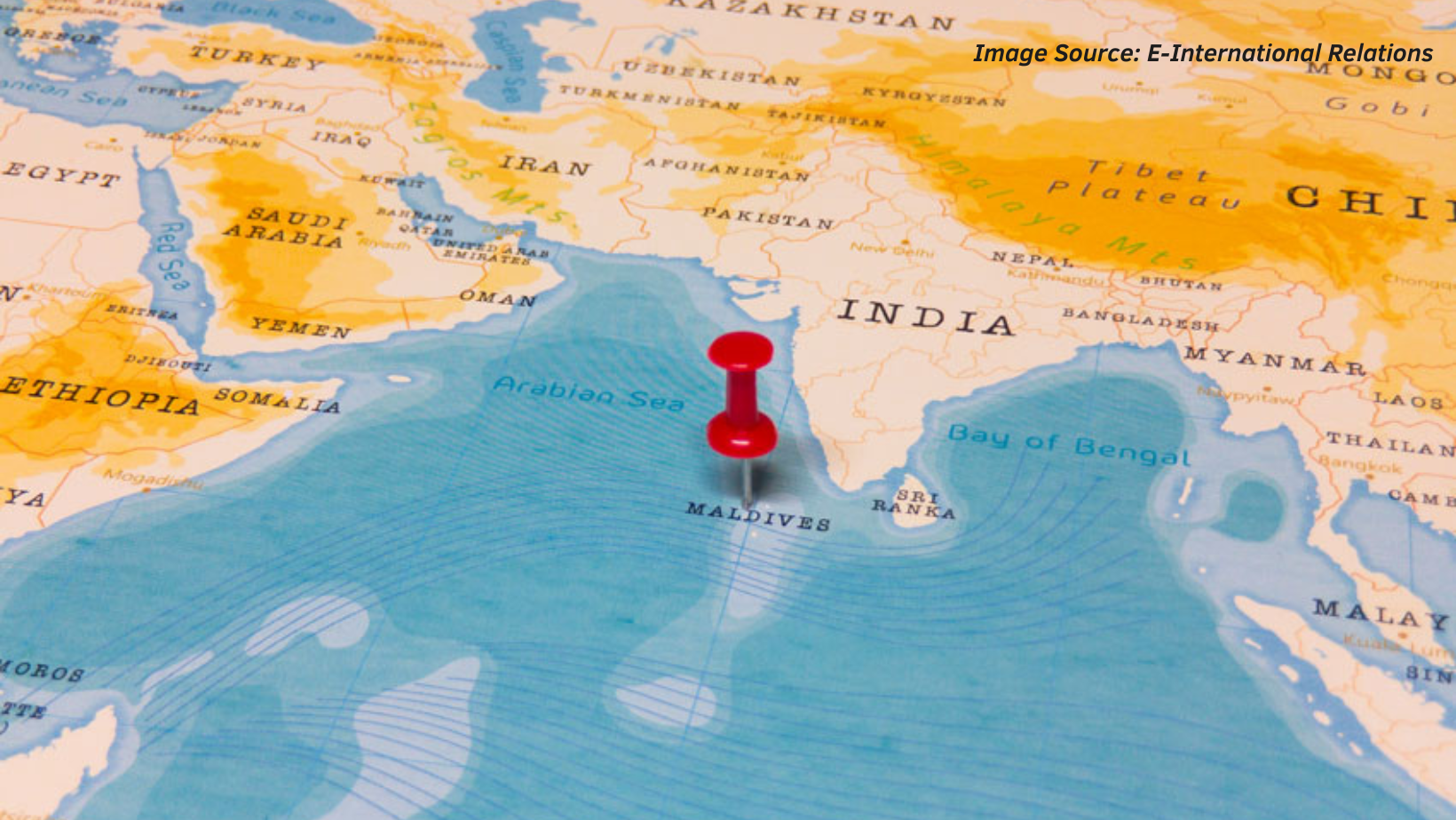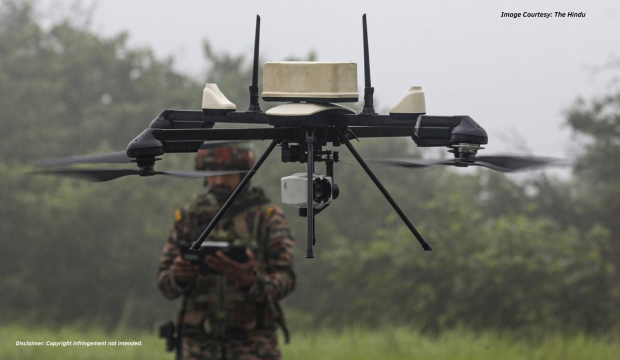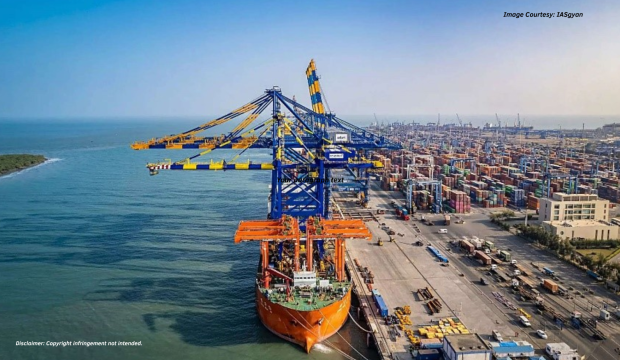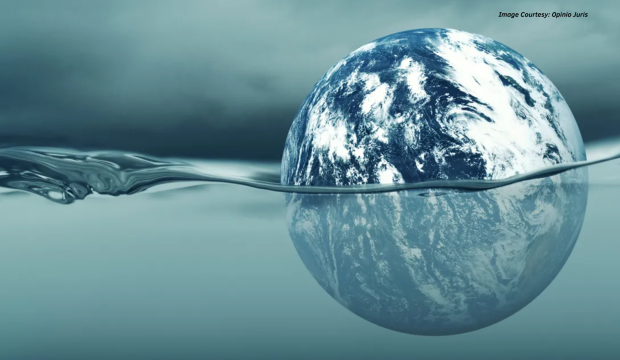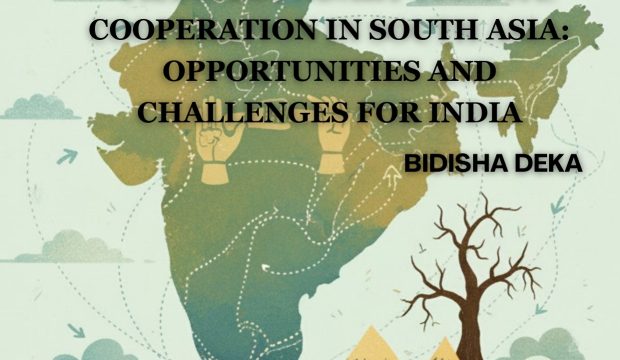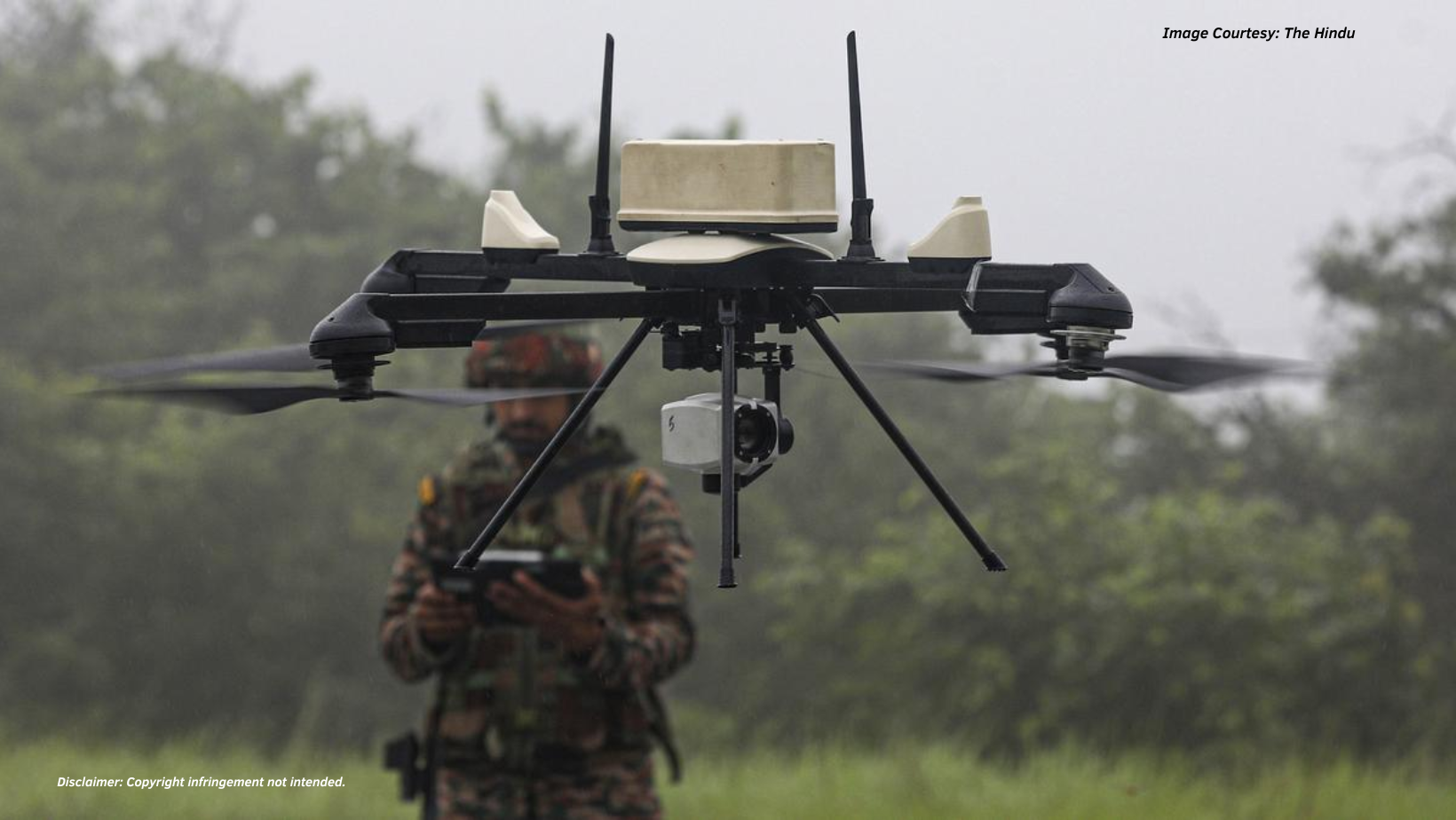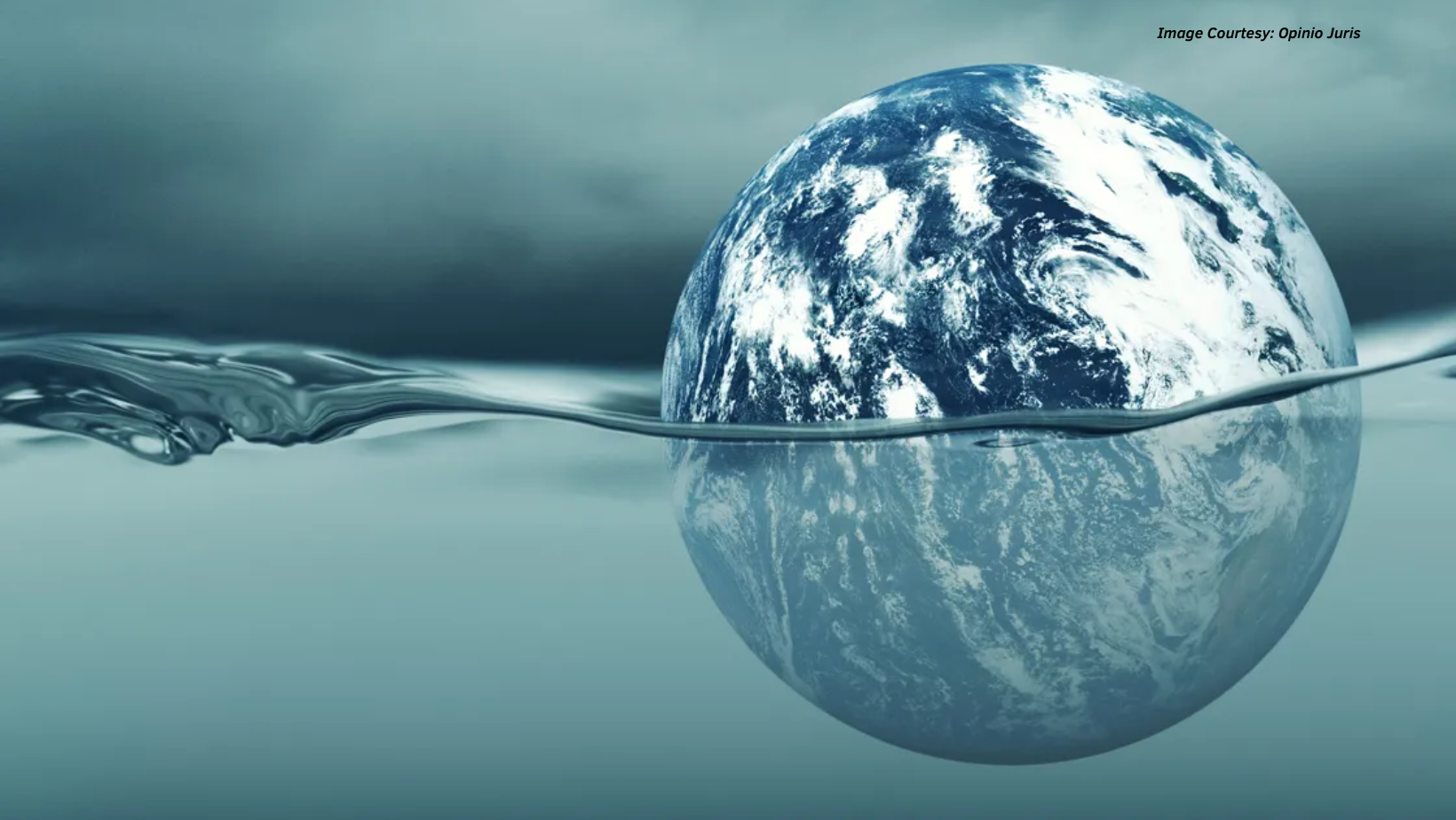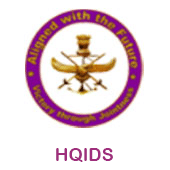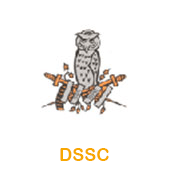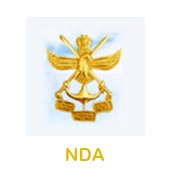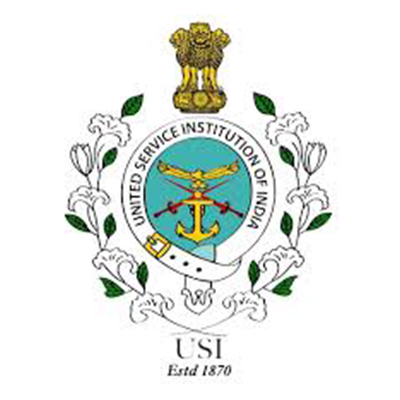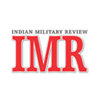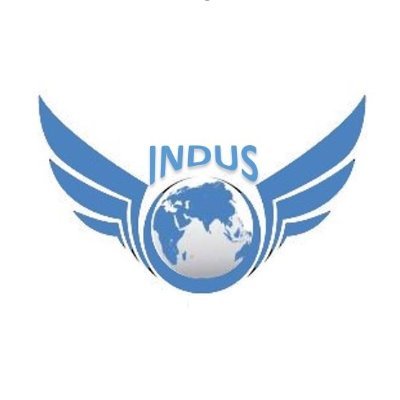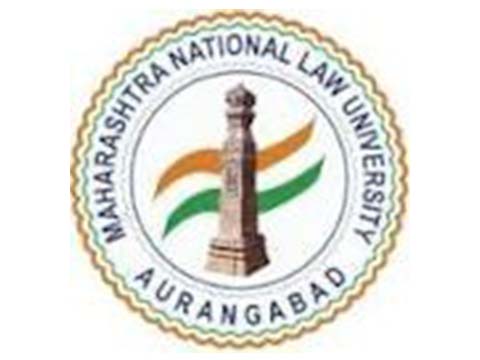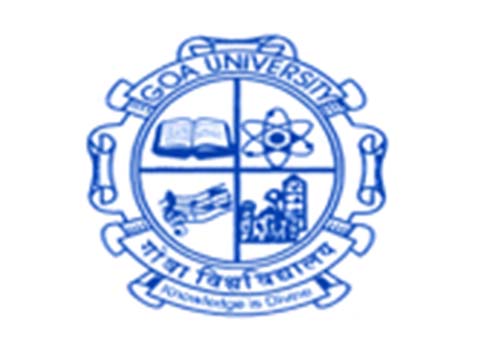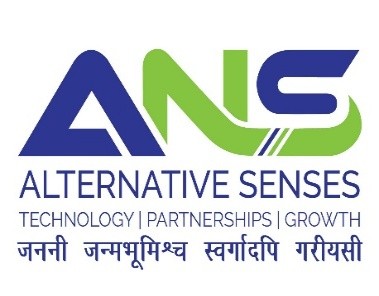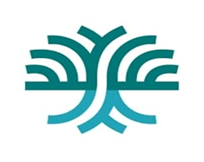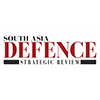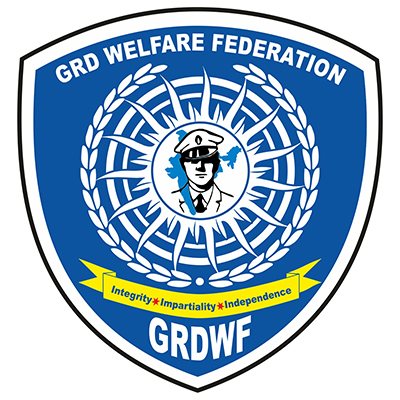Background
Maldives is an archipelago in the South Asian region which has Sunni Islam prescribed as its official religion[1]. Still, the Islamic practices have been less conservative in the country since the time of independence and India has always enjoyed friendly relations with this neighbour. Maldives historically did not use Islam as a tool for governance but this is a trend that has been sprouting since the Authoritarian ruler Gayoom gained power there. This popular tourism destination has been home to unrest and radicalisation in the recent past because of a growing divide between the so-called “100 per cent Muslims” and those who are considered not to be so[2]. Even though Islam is unchallenged in the region, many believe this influx of protectionism has come because of the influence of Western culture and its thriving Tourist Economy. This radicalisation has joined hands with extremism and terrorism making it a matter of international concern. This is primarily because of the influence of Saudi Arabia and Pakistan-based terrorist organisations in Maldives[3] . The same has come about through a major influence in Education as the Maldivian education system lacked severely so a lot of parents sent their children to Madarsas in Middle Eastern countries and Pakistan[4]. More often than not they have come back radicalised and sometimes because of their interactions with the terrorist organisations present on this basis, they have added to the pool of foreign fighters.
Monitoring in particular becomes difficult as the archipelago has some dense islands where extremism has been taking space and the same came to be observed during the post 9/11 period, where support for Osama Bin Laden was expressed in the forms of posters etc. In recent years, the Maldives has grappled with the presence of more than 1,400 extremists there. Particularly for organisations like ISIS, the nation has emerged as one of the greatest per capita providers of foreign terrorist combatants in the world[5].
India and Maldives Relations- Historically
Geopolitics surrounding the two countries is such that both are important to each other. Maldives’ location makes it important for India to have good ties with the island nation for bypassing trade and oil export routes[6]. Acknowledging the same, the Indian government has time and again carried out various policies to enhance its relations as it has done so with its neighbours, for eg through the Neighbourhood First Policy and SAGAR (Security and Growth For All Regions)[7]. The Indian state of Kerala and the Lakshadweep Union Territory are both located near the Maldives,[8] of which are only 1,200 km from the Indian mainland. The interdependence and strategic linkages between the two countries are highlighted by their proximity geographically[9].
India has also taken a keen interest in the domestic happenings of Maldives as its stability is crucial to India given its proximity and the real possibility of a security threat it might face in cases of Chinese involvement or that of Pakistan’s ISI. India has changed its perspective on the Maldives from being a country inside its area of influence in South Asia to one that is more supportive as a “net security provider”[10]. This strategy highlights the advantages India can provide to smaller nations in the area, highlighting India’s dedication to promoting stability and progress in the Indian Ocean region. In addition to historical links, India’s relationship with the Maldives is motivated by the need to protect its security and interests in the larger Indian Ocean area.
Politics and Radicalisation
The intertwinement of politics, religious extremism, radicalisation and terrorism has created a dangerous nexus in the Maldives. Upon following the same we see how each of them has developed over time and the role that different political leaders have played in the same. Maumoon Gayoom, who was the nation’s authoritarian leader from 1978-2008 is said to be the facilitator of radicalism in the country as it was during his term that Maldives witnessed Islamic extremism and a swift departure from conservatism. Autocracy, corruption, and the repression of political opposition were characteristics of Gayoom’s authoritarian rule. His regime passed legislation, including the 1994 Protection of Religious Unity Act, forcing Sunni Islam on the Maldivians and limiting religious freedom. The Constitution was amended in 1997, reinforcing Islam as the sole officially practised religion and outlawing the practice of other religions.
Over time the domestic politics of the nation has seen the emergence and role of parties like Jamiyyathu Salaf (JS), the Islamic Foundation of the Maldives, and the Adaalath Party (AP) working to ensure greater use of Islam as a tool of governance and not merely as a cultural guideline[11]. Even when they had more democratic and liberal leanings, political parties have been forced to accommodate these radical forces and their demands. Through the ‘Defending Islam’ campaign, the AP and other extreme groups significantly contributed to the overthrow of the Nasheed administration in 2012. This association with extremist forces persisted even during President Nasheed’s leadership, demonstrating the scope of their power. Mohamed Nasheed was the first democratically elected ruler of Maldives in 2008 and his tenure has had a mixed effort on this triple threat nexus, his rule propagated freedom of expression and liberal democracy that should have countered the nexus but instead, it led to the propagation of radical views openly in public settings and even ISIS and Al Qaeda recruiters found it easy to establish their propaganda. The stronghold of these extremist parties is such that even under Nasheed who was Maldive’s most liberal and democratic leader till now had to ally with the AP which then controlled the Islamic Affairs Ministry of the country and even though their interference was comparatively reduced in comparison to terms of other leaders but still was prominent.
It is important to note here that while under Gayoom’s rule, Islamic radicalisation might have witnessed an upsurge, he kept the terrorist elements largely at bay which saw an opposite outcome under Nasheed’s liberal policies. Nasheed was forced to resign by protests in 2013 and Abdullah Yameen who is the half-brother of Gayoom came to power. To increase his political support, he developed links with Saudi Arabia and the Wahhabi community[12]. The result was coercive measures against liberal dissidents and those fighting for civil freedoms including freedom of speech and religion, as well as the institutionalization of orthodox Islamic practises.
Major Attacks and Global Response
Terrorism on Maldivian soil might be less in number of attacks and intensity in comparison to others as the population that goes into extremism is mostly utilised as foreign fighters but terrorist attacks targetting primarily the democratic government and tourists have been carried out. The trend started with the 2007 Male Sultan Square Attack which left 12 tourists injured making the target very accurate[13]. On April 15, 2020, five speedboats were destroyed in an arson assault in Mahibadhoo Harbour in the Alifu Dhaalu Atoll, which the Islamic State claimed was carried out in the Maldives. On May 6, 2021, Mohamed Nasheed, a former president and the current speaker of parliament, was severely injured by an IED explosion outside his residence in Male, the nation’s capital, in a significant terrorist strike inspired by IS. Others, including his bodyguards and onlookers, also sustained injuries.
Since the Maldives is primarily a tourist destination and the perpetrators of these attacks are unhappy because of the Western influx and different biased laws that exist for the tourists, various countries have issued guidelines as a response to these attacks in their travel guidelines in the UK in 2017[14]. However, all these countries along with the UN body recognise the Maldivian government’s efforts to curb Extremist elements and terrorism in the country as they have been making arrests and curbing hate speech which is very prominent on social media platforms. They have even been part of projects and treaties with India which were signed at the Indian Ocean Conference in 2019, dealing with mutual help, assistance, evidence gathering and intelligence sharing to investigate crimes like terrorism. There are also other such Projects like Project Scorpios that Maldives was a part of to curb terrorism in South Asia but it was only for 2 years and lapsed in 2019[15].
ISIS and Al-Qaeda
ISIS and Al-Qaeda are the two terror groups that have managed to influence the Maldivian youth population to join their ranks as foreign fighters. Al-Qaeda was the first to establish a branch there as early as 2009 which suffered from a split post the 2014 ISIS caliphate declaration in 2014. One section supported the openly affiliated Al-Qaeda Al-Nusra Front, while the other sided with Abu Bakr al-Baghdadi’s ISIS[15]. The radicalization of Maldivians was facilitated by the extremist factions’ extensive production and dissemination of Salafi-Jihadist material in the local tongue before this divide.
Post the split the number of Al-Qaeda’s supporters started dwindling as more and more people started aligning themselves with the ISIS ideology. Maduvvari Island soon emerged as an ISIS hub where the infamous ISIS operator Mohammad Ameen was working to recruit Maldivians and send them to join the ranks of Jihadists in Syria and Iraq. They even claimed responsibility for the 2019 attack and their presence became very prominent post-2020 as that is when the third edition of Voice of Hind (A Jihadist Propaganda Magazine focused on India) was released and it had sections dealing with appraisement of attacks carried out in Maldives against tourists. The connection of such groups with an Indian-centric issue is another reason why the spread of this propaganda in a country in India’s proximity becomes a major concern for the nation. The only relief for India in this situation is that there are no terrorist or ISIS bases established in Maldives yet, they mostly have present recruiters. These recruiters are also flagged criminals because of their involvement with gang violence and hence there is also a bridge between the criminal gangs and terrorist groups in Maldives. Addu City Cell is the ISIS Maldives cell and is the group responsible for carrying out terrorist attacks in the country[16].
Back in 2019, the United States placed targeted sanctions on Mohamed Ameen, a 35-year-old Maldivian, after designating him as a “key leader for ISIS.” This was the first time a Maldivian person had ever got such a designation, illustrating the rising worry throughout the world over Maldivians’ involvement in terrorist operations[17].
Indian Efforts and Involvement
India has always seen Maldives as an important neighbour and has hence even collaborated with them on various occasions in the field of security and military cooperation. The Maldivian leaders have often asked for Indian assistance in domestic crises like that in 1988 when the Maldivian President Maumoon Gamoon faced a threat by a mercenary coup and called for Indian help from Rajiv Gandhi and Operation Cactus was carried out to weed out the threat by the Indian Army. This happened again in 2018 when the former Maldivian President Nasheed was put under arrest and an Emergency was declared by the new President Yameen, the opposition called for India’s help sent a special envoy and declared its displeasure over the situation[18].
Indian involvement in the region has not been limited to the military and security part but has also involved aid in the form of financial assistance during the 2004 Tsunami, the 2014 Water Crisis and the pandemic[19]. This however has also elucidated a negative uproar from some leaders and citizens in Maldives which we will be discussing in the sections going forward. India’s assistance and involvement in Maldives has been growing since 2018 due to increased Chinese involvement in Maldives and its plans under the String of Pearls strategy. As a part of India’s increased involvement new bridges, infrastructure, and a Coast Guard post close to the capital, Malé have been constructed. Additionally, India is growing its presence in Addu in the south by constructing a police academy and preparing to establish a consulate there. Additionally, India maintains contingents from its Coast Guard and Navy stationed on several Maldivian islands to assist with medical evacuations and protect the country’s expansive exclusive economic zone[18].
Indian Concerns
Although Indian aid and involvement in the region might appear to be a sign of budding friendly relations between the two nations to a larger extent that has even been true, especially between the leadership, but, over time the sentiment might not be shared by the local Maldivian population especially the radicalised facet of it. There seems to be a growing Indian sentiment which was largely displayed last year when a gathering of politicians and diplomats at the Indian Embassy was attacked and the lives of approximately 150 people were put in danger[20]. This was done so, because the radicals believed the celebrations and the practice of yoga to not align with Islamic ideals. This animosity has been manifested in the forms of threats and hostility towards other working Indian professionals in the Maldives like doctors and teachers. Social Media has primarily been used as a tool to spread anti-India propaganda and preach the same online. Some Maldivian leaders, like Abbas Adil Riza, have made charges and insinuations that the 2012 arson assault in Addu City was ordered by India and that the damage caused by the attack was not reimbursed, which has further complicated the issue[21]. The mobility of people between southern India and the Maldives, such as Moosa Inas and Asif Ibrahim, highlights the necessity for collaboration and vigilance in preventing the possible spread of extremist doctrines and behaviours throughout the area.
India Out Campaign: Reasons for Hostility Against India
There are multiple reasons for this recent negative sentiment and enactment against India, this ranges from being as simple and common as India’s size and influence. This is shared between India’s neighbours as we have observed before that many of India’s neighbours like Nepal and Bangladesh have complained about India’s big brother attitude which has increased their scepticism about Indian involvement in their internal relations.
Another line of scepticism comes from the presence of the Indian military and its involvement in the region, whether it was during the time of the coup against Gayoom in 1988 or in the face of the Dhruv Advanced Helicopters provided by India to carry out Search and Rescue operation on the island on the request of the leadership[22]. While the government might have seen this as necessary, the opposition has largely spun the narrative around portraying it as interference on India’s part. Here a parallel can be drawn between Maldives and Sri Lanka as they were both during Rajiv Gandhi’s time and in both cases, they set out to intervene at the request of the governments but soon found the other parties to be hostile.
Now here, it is also important to note how Political leadership has played a role. Gayoom while authoritarian wanted India’s involvement in the region. Under Nasheed even though the radicalisation was at an all-time high, India-Maldives relations were also prospering. They started to dwindle once Yameen came to power. His response to Indian involvement was mixed as he was said to be Pro-China, however, there has been no clear indication of the same. He had allowed Chinese projects to be launched in the region and had rejected Indian helicopters but that is not enough to point to a pro-China stance. The issue surrounding the helicopters is also an important one as the two Dhruv Advanced Light Helicopters (ALF), based in Addu Atoll and Hanimaadhoo, that India donated to the Maldives in 2010 and 2015. These helicopters were used for patient airlifting between islands, maritime weather surveillance, and ocean search and rescue operations22. According to the terms of the bilateral agreements between the two countries, Indian officers had been sent to the Maldives to train the Maldives National Defence Force, whose command these helicopters were under, but some in the anti-India constituency, especially Yameen’s party PPM, were trying to portray that by gifting these helicopters, India was creating a military presence in the country because they were military choppers. However, while this has been cited by experts to site Yameen as Pro-China and Anti-India the same is not very clear as under his presidency only India and Maldives signed the UTF Harbour Project under which India could develop a harbour at Uthuru Thilafalhu, a strategically located atoll near the capital Malé along with the 2016 Action Plan on defence cooperation22.
Nevertheless, the situation was restored to normalcy and all the agreements that were said to be under were restored in 2019 when Ibrahim Mohamed Solih came to power along with the UTF Harbour Project. This project to date is a major driver of the Anti India sentiment or the “India Out Campaign” as for the longest time the documents on the projects and the agreements were not made public and the opposition spun the story that India is constructing a naval base in Maldives affecting its sovereignty. Even after the agreements were made public and comments were issued by both sides clarifying the same. The popular narrative is still that it is just a dockyard and harbour in name but in reality, has all the necessary features of a naval base. However, the opposition frequently ignores the reality that a naval military post in a nation as physically near to India as the Maldives offers nothing in the way of strategic significance. This is especially true when compared to India’s efforts to establish bases in farther-flung nations like Mauritius and Seychelles, China’s facility in Djibouti, or the American military base in Diego Garcia, all of which are located at a great distance from their respective home countries’ mainlands and would aid in extending power projection or maintaining supply lines[23]. These sentiments and speculations have often been expressed in the local newspaper, Dhiyares whose leader Ahmed Azaan is said to be a working associate of ex-President Yameen. They also used the establishment of the Maldivian police academy with Indian assistance to be viewed as Indian interference with ulterior motives when in reality it was done under the capability development partnership between the two[24]
The anti-Indian sentiment has seen a culmination in the form of the India Out Campaign. The ‘India Out’ movement isn’t solely driven by general concerns about everyday interactions between people. Instead, it’s fueled by specific apprehensions related to India’s role in the Maldives[25]. It’s worth noting that this movement has employed various tactics and messaging approaches. Unfortunately, some individuals associated with this campaign have resorted to making violent threats, often accompanied by the hashtags “India Out.” These concerns have been troublesome for New Delhi and culminated in a discussion between the Maldian leaders and the Indian Minister for External Affairs back in 2021 where they established that Indian involvement might be required to maintain stability on the island[24]. However, India has not acted on the same so far maybe owing to the already existing local skepticism against the nation.
This fear has been coupled with that of Chinese involvement in the region post-2014 since China made the Maldives a partner of its Belt and Road Initiative and other development projects like the China-Maldives Friendship Bridge and those in Feydhoo Finolhu island[26]. Their economic influence further expanded with the amendment in the Maldivian constitution allowing foreign ownership of land which is said to be done primarily to facilitate Chinese investments. Under the Yameen government, there were also reports of mounting debt of Maldives under Chinese projects which could result in a situation similar to Sri Lanka’s Debt Trap, either way, the situation is worrisome for India[27].
Recent Developments
The 2023 Maldivian Presidential Elections of Maldives brought all this under focus as the winning candidate Mohommad Mizu campaigned primarily on the promise of removing the Indian military from Maldives and restoring its sovereignty. Considering the anti-India sentiment and the prevalence of the India Out Campaign, his coming to power was not surprising. The campaign focussed on one topic while ignoring other crucial issues like the economy and climate change. It’s crucial to emphasise that there are just a few Indian troops stationed in the Maldives, and they are classified as “unarmed.” These troops are primarily there to support the operation of helicopters and Dornier aircraft owned by the Indian government[28]. The campaign, however, deftly took advantage of a deal involving the creation and maintenance of a Coast Guard harbour at Uthuru Thila Falhu for Maldivian soldiers. This development fueled anti-Indian sentiment by being represented as a permanent Indian military presence.
The Way Ahead
The possible moves on India’s part will have to be dynamic unfolding with the development of Muizzu’s stand on the issue. Maldivian presidents with a background like Muizzu have either not acknowledged the presence of Foreign fighters in the region or have been accused of being involved in negotiations with them. Muizzu’s actions on the same will have to govern India’s actions as in either scenario it will have to prioritise its security and ensure it does not face a threat from Maldives. Strong arming the Maldivian president would not only go against India’s global image and historic precedent but would also not be a very viable option given China’s looming presence in the South Asian region. The best possible alternative for India right now would be to continue engagement with the Maldives in soft power capacity i.e. keeping up with infrastructure projects, joint diplomacy, collaboration on climate and sustainability issues, funding etc. Steering clear of military and security conversations might be in India’s best interests till the public sentiment in the Maldives is up to being positive again and Muizzu’s vision and ideology on the issue of foreign fighters become clear.
Conclusion
There is a lack of clarity on India’s future involvement in the Maldives and the future of its defence and security cooperations with the nation post-Muizzu’s rise to power. Going further India will have to deal with this situation heads on to continue its ties with Maldives and to eliminate threats against it. Economically, the nation could aim to increase its aid to the island nation to counter China’s growing influence and in coordination with the UN, other countries and Maldives place sanctions against the violent extremist elements like Mohammad Ameen. Even if it receives a counter from China here, it would first of all prove Chinese involvement in the nexus and secondly, India could lobby to counter that as it did during the time of Mahmood Azhar. Nevertheless, Indian presence in terms of security and deployment of troops to assist and train Maldivian forces is necessary in the face of the growing terrorism and extremism in the region. Hence, Indian authorities must find a way to diplomatically agree with Muizzu to ensure he does not work against the Indian presence in this scenario and its removal. Also, the link between the political leaders and the rise of extremism shows a trend, under authoritarian or comparatively less liberal leaders like Yameen and Gayoom, it is less likely to rise than under liberal democratic leaders like Nasheed and Solih. This makes us question whether Maldives has a similar nature to Pakistan where foreign powers also believed that the nation was less likely to fall into the hands of terrorism with a military ruler at the helm.
DISCLAIMER
The paper is author’s individual scholastic articulation and does not necessarily reflect the views of CENJOWS. The author certifies that the article is original in content, unpublished and it has not been submitted for publication/ web upload elsewhere and that the facts and figures quoted are duly referenced, as needed and are believed to be correct.
References
- Counter Extremism Project. Maldives: Extremism and Terrorism. Counter Extremism Project.
- National Counter Terrorism Centre. (2019, February 1). FEBRUARY 2019. National Counter Terrorism Centre.
- Shivamurthy, A. (2022, July 1). Trouble in Paradise: Endorsed Extremism and Sustained Extremist Ecosystems in the Maldives | ORF. Observer Research Foundation.
EFSAS. (2022, November 18). The arrest of 14 people in an Islamic State terror plot in the Maldives bares the pitfalls of waning international attention on terrorism. European Foundation for South Asian Studies
- Storey, H. (2019, December 24). Violent Extremism in the Maldives: The Saudi Factor. The Diplomat.
- Maitra, R. (2016, February 22). Assessing ISIS’s Emergence as a Prime Threat in SAARC Countries. Indian Defence Review.
- Manoharan, N. (2022, August 4). India’s challenges in Maldives. Deccan Herald.
National Counter Terrorism Centre. (2019, February 1). FEBRUARY 2019. National Counter Terrorism Centre. Retrieved October 16, 2023
Kumar, N. (2018, November 17). India Needs Maldives as an Ally in the Indian Ocean. Centre for Land Warfare Studies (CLAWS).
- Brewster, D. (2021, November 24). Maldives: India first or India out? Lowy Institute.
- Shivamurthy, A. (2022, July 1). Trouble in Paradise: Endorsed Extremism and Sustained Extremist Ecosystems in the Maldives | ORF. Observer Research Foundation.
EFSAS. (2022, November 18). The arrest of 14 people in an Islamic State terror plot in the Maldives bares the pitfalls of waning international attention on terrorism. European Foundation for South Asian Studies (EFSAS).
- Hafeez, M. (2007). Growing Islamic militancy in Maldives Mahwish Hafeez * Introduction Maldives is famous for its tropical climate, and sandy beaches. Institute of Strategic Studies Islamabad.
EFSAS. (2022, November 18). The arrest of 14 people in an Islamic State terror plot in the Maldives bares the pitfalls of waning international attention on terrorism. European Foundation for South Asian Studies (EFSAS).
- Counter Extremism Project. (2023). Maldives: Extremism and Terrorism. Counter Extremism Project.
- U.S. Department of Treasury. (2023, July 31). Treasury Designates Leaders and Financial Facilitators of ISIS and al-Qa’ida Cells in Maldives. Treasury Department.
- Moorthy, N. S. (2019, September 13). Maldives: Designation brings US terror war closer? | ORF.
- Brewster, D. (2021, November 24). Maldives: India first or India out? Lowy Institute.
- Manoharan, N. (2022, August 4). India’s challenges in Maldives. Deccan Herald.
Siyech, M. S. (2022, September 16). Poverty, Criminality, Extremism: The Interrelated Sources of Insecurity in Maldives | ORF
- DHNS. (2022, December 24). Maldives leader calls for attack on Indian embassy, govt orders probe. Deccan Herald.
- Banka, N. (2021, July 9). Explained: What is behind the ‘India Out’ campaign in the Maldives? The Indian Express.
- Ghafoor, M. A. (2023, May 20). Damaging and Disingenuous: Evaluating the ‘India Out’ Campaign in Maldives. The Diplomat.
Didi, R. M. (2022, November 21). The Maldives’ Tug of War Over India and National Security. Carnegie Endowment for International Peace.
- Banka, N. (2021, July 9). Explained: What is behind the ‘India Out’ campaign in the Maldives? The Indian Express.
- Manoharan, N. (2022, August 4). India’s challenges in Maldives. Deccan Herald.
- Mitra, R. (2022, January 19). The China-India Cold War in Maldives. The Diplomat.
Kakkar, H. (2023, October 10). A setback, but not a disaster in Maldives. The Statesman.


